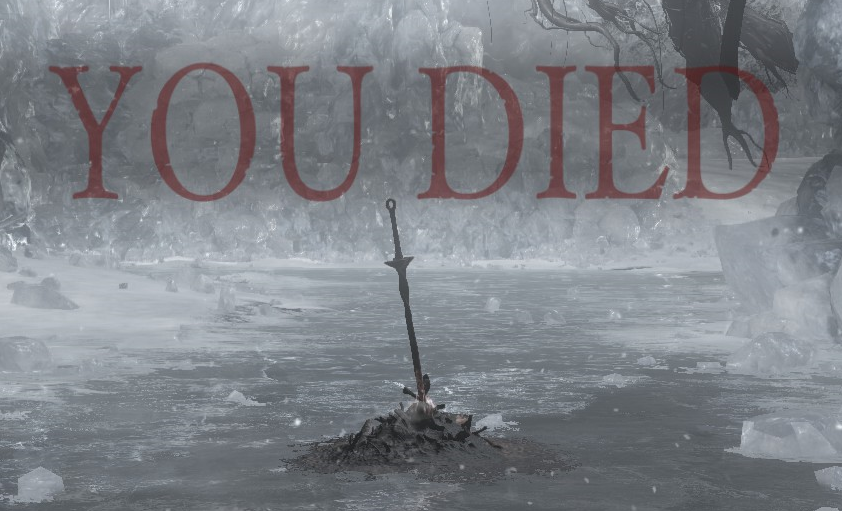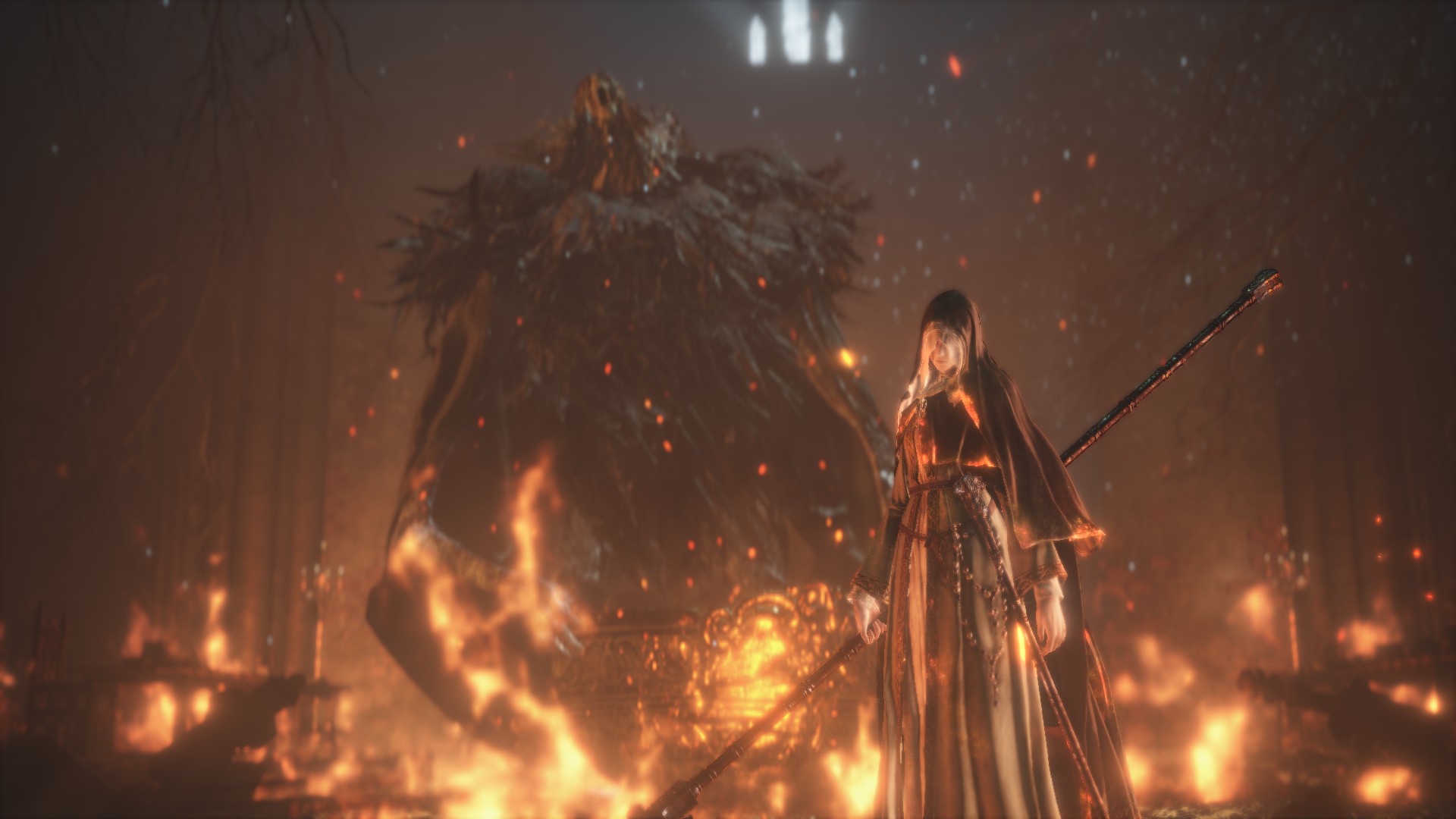What makes a game "Well Designed"? How is Game Design responsible for a game being Difficult or Easy? What causes players to stonewall for hours against a boss, or defeat an area on their first run?
I believe the best way to put it simply is to describe Game Design as 2 opposing forces. One side is always trying to challenge the player, while the other always trying to help the player. Let's take a look at how this is implemented in games.

The Challenging Side of Game Design.
This is the most easily noticeable of the 2 sides. Games like Dark Souls 3 are full of around-the-corner bad guys attempting to shove the player off a ledge or into an ambush, hiding monsters behind trees and doors, mimics trying to hide and trick the player into certain death.
Now, does that mean Dark Souls 3 is a brutal game? A sadistic game as so many put it. One of the hardest games ever made. A dishonest game that wants nothing other than kill the player at every way possible unless the player pays tribute to it's boss fights long enough in order to progress?
Absolutely not.

The Helping Side of Game Design.
While at first Dark Souls 3 may seem like a nightmare, and through your first run you may in fact need to perform "Trials by Death" in order to understand it as the game is very much designed to be challenging, the game is by no means evil or sadistic. A game like Dark Souls 3 is in fact focused as a "Rewarding Design" rather than a punishing one, let's take a look.
The first time you get caught by a around-the-corner monster trying to get a sneak attack on you, you may get caught by surprise, how ever take a look around you and you will notice how the level tried to warn you of the monster prior to encountering it. Each and every single around-the-corner monster in the game is predominantly featured after a reasonably large hallway, or directly facing a ledge where you would fall off of, perhaps behind a door or next to a doorway where the player would enter from. All these things are in fact clues left by the game and level designer in order to warn players from the upcoming danger.
Rather than having a tutorial-tip cut the immersion in half, or a voice-over character speak through a voice chat on your character's ear, or any number of ways the game could tell you this information, a game like Dark Souls 3 prefers to show it to you personally within the level itself, allowing a player going through an area for the first time to have the ability and the tools necessary to avoid danger without having to die to it and repeat it over and over.

Don't believe me? Look at everything else in the game.
A Mimic in Dark Souls 3 contain 2 distinctly identifiable marks, it's chain is flipped to the opposite side of real chests and their chains, and Mimics tend to breathe slightly and cause them to shiver and move while standing still. You can even hit chests in the game once before causing damage to them and if they don't come back to hurt you it means they are real chests. With this piece of information it is in fact possible to go through the entire Dark Souls 3 campaign without ever getting caught unaware by a Mimic, or any other danger. A well designed game is both intended to throw challenges at the player while warning the player of them and provide the player with the tools necessary to overcome them.
So how is it then, how do you overcome those challenges and learn to understand how the Game and Level design can work in your favor, in order to not get caught by surprise and even defeat areas and monsters first try?
By practicing it with other games. Like I mentioned above almost every single well designed game works both with and against the player, providing clues and hints as to how to optimally play it and avoid deaths or traps without ever wasting time with written tutorials or video popups or character dialog. The rule you would always have to consider is simple;
"Everything exists for a reason".
Every platform in Shovel Knight every block in Mario every barrel in Donkey Kong all exist for a reason. When you arrive at a room filled with powerups and health items, you expect the next room to feature a boss, the previous room is even called a "Boss Fountain". If a platform stands alone at the top left of the screen while the level progresses to the right, you can bet your ass it contains a secret, maybe an extra life even. If the room is completely empty yet the wall seems to stand out, you will find a hidden door behind it. Every game "speaks" to the player in a very intuitive language, all you need to do is learn how to "speak" it. A game will never put something in a game that is truly unbeatable, everything that appears in Dark Souls 3 is a challenge meant to be defeated. Which is part of what I love about Dark Souls 3, it isn't a sadistic game you hurt yourself playing, it's in fact a game about becoming powerful and overcoming challenges.
So next time you play a game, be Shovel Knight or Yooka Laylee, Dark Souls or Metal Gear, GTA V or Mass Effect, try to keep an eye out for things that stand out, solve what the Game Design is trying to teach you. And you will understand how Game Design can be your friend.


